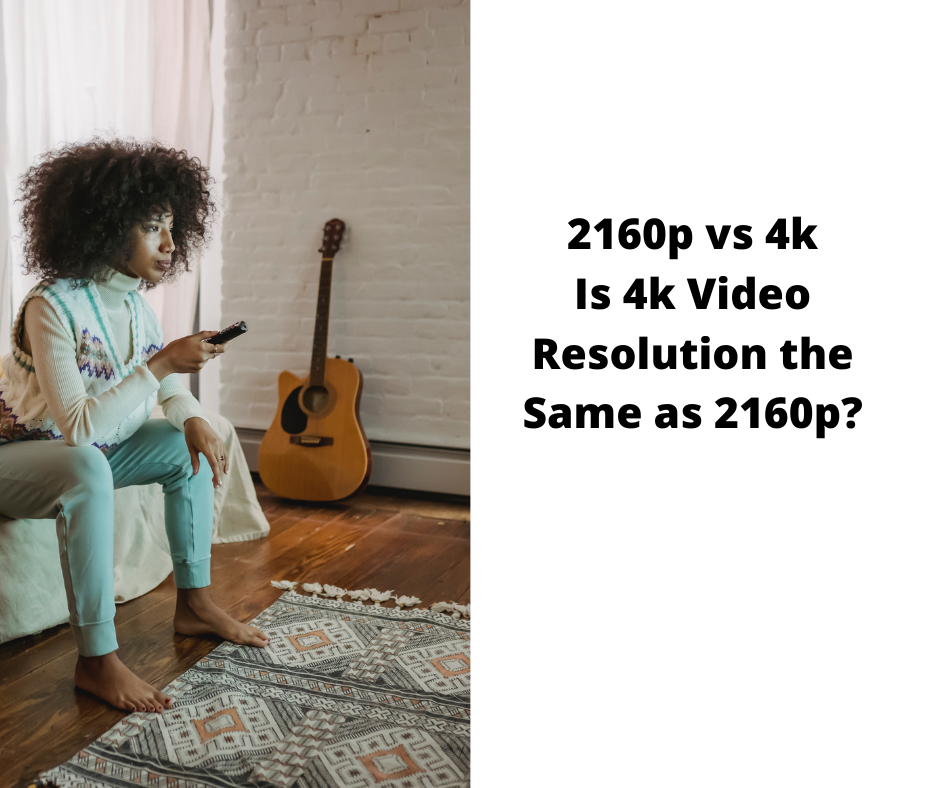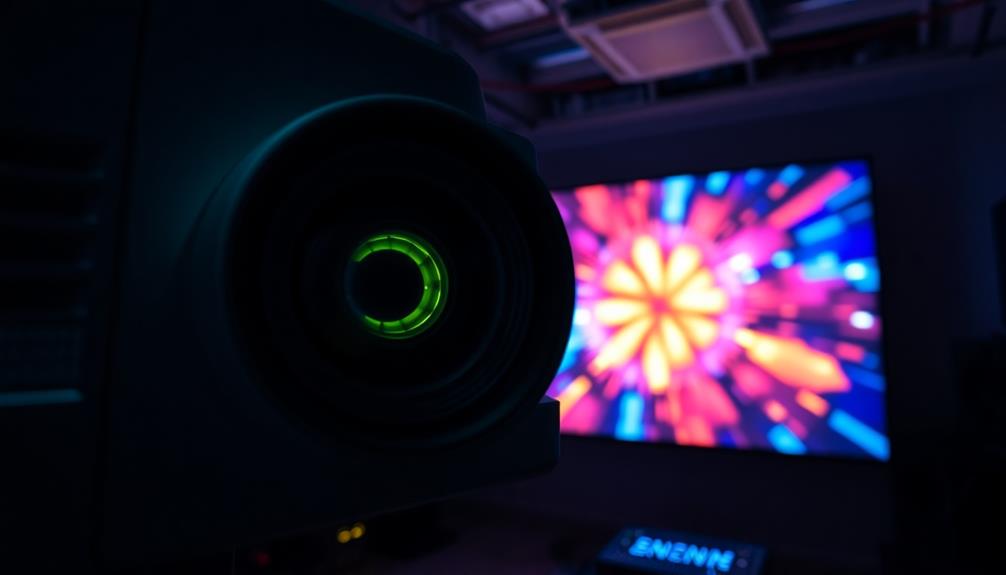Understanding HDMI ARC and eARC can make your home theater setup a breeze. HDMI ARC simplifies connections by allowing audio to flow from your TV to your sound system using just one cable. This means less clutter and easier operation with one remote. eARC takes it a step further by supporting higher-quality audio formats, enhancing your sound experience. To get started, check for HDMI ports labeled ARC or eARC on your devices. With the right setup, you'll enjoy seamless audio and video. Stick around—we've got more tips to help you maximize your home theater experience.
Key Takeaways
- HDMI ARC simplifies home theater setups by allowing audio signals to travel back to soundbars or receivers using a single cable.
- HDMI eARC enhances audio quality, supporting lossless formats and providing higher bandwidth for immersive sound experiences.
- Both HDMI ARC and eARC help reduce cable clutter, making setup neater and more manageable for wall-mounted TVs.
- Compatibility can be checked by locating HDMI ports labeled "ARC" or "eARC" on both the TV and audio devices.
- Firmware updates are essential for maximizing the performance and compatibility of devices using HDMI ARC or eARC.
What Is HDMI?
HDMI, or High-Definition Multimedia Interface, is your go-to standard for transmitting high-definition video and audio signals through a single cable. It simplifies how you connect your devices, like TVs, soundbars, and gaming consoles.
Since its introduction in 2004, HDMI technology has evolved remarkably, supporting resolutions up to 8K and advanced features like HDR and 3D.
Standard HDMI cables, known as Type A, feature 19 pins and are used for most home entertainment devices. There are also Type C (mini) and Type D (micro) connectors for specific applications.
One of the standout features of HDMI is its ability to carry various audio formats, including multi-channel audio and lossless formats, which greatly enhance your home theater system's audio experience.
With the latest HDMI version, HDMI 2.1, introduced in 2017, you can enjoy increased bandwidth capabilities, allowing for impressive features like 4K at 120Hz and variable refresh rates.
This makes HDMI an essential component for anyone looking to enjoy high-quality video and digital audio in their home setup, whether you're gaming or watching movies.
Understanding HDMI ARC
An essential feature of modern home theater setups, HDMI ARC (Audio Return Channel) simplifies how you connect your TV to an audio system. Introduced with HDMI version 1.4 in 2009, it allows you to send audio from the TV back to an AV receiver or soundbar using a single HDMI connection. This not only reduces cable clutter but also streamlines your setup.
To take advantage of HDMI ARC, verify both your TV and audio device have HDMI ports labeled as ARC, typically found in HDMI 1 or 3. Standard HDMI cables work perfectly for these connections, making it accessible for most users.
While HDMI ARC supports up to 5.1 surround sound formats, be aware of its limitations; it primarily supports compressed audio formats like Dolby Digital and might lead to lip-sync issues during playback.
One of the key benefits of HDMI ARC is its ability to enhance your audio experience. You can enjoy sound from built-in TV apps through your external speakers, greatly reducing the need for multiple remotes when switching inputs.
Embrace HDMI ARC, and simplify your home theater experience today!
Exploring HDMI Earc
For those looking to elevate their home theater experience even further, eARC (Enhanced Audio Return Channel) offers significant advantages over standard ARC. With HDMI eARC, you can enjoy lossless audio formats like Dolby TrueHD and DTS-HD Master Audio, ensuring your audio output is crystal clear and immersive. This technology supports uncompressed audio transmission, simplifying connectivity for high-quality audio setups.
To fully leverage eARC's enhanced audio features, both your TV and audio devices need eARC-compatible HDMI ports. Here's a quick comparison of eARC and standard ARC:
| Feature | HDMI eARC |
|---|---|
| Bandwidth | Up to 37Mbps |
| Audio Channels | Up to 32 channels |
| Compatibility | Backward compatible with ARC |
eARC is perfect for serious home theater enthusiasts, as it enhances the audio experience with advanced compatibility for the latest audio technologies. It even provides automatic lip-sync correction, making it easier than ever to enjoy your favorite movies and shows without distractions. If you're investing in a sophisticated setup, eARC is a must-have.
Benefits of HDMI ARC
One of the key benefits of HDMI ARC is how it simplifies audio connections in your home theater setup. By allowing audio signals to travel back from your TV to your soundbar or receiver through a single HDMI cable, it eliminates the need for separate optical or coaxial cables. This means you can enjoy enhanced audio quality without the hassle of multiple connections.
Most modern TVs since 2009 include at least one HDMI ARC-enabled port, making it widely accessible for various setups. With HDMI ARC, you can also reduce cable clutter, especially if you have a wall-mounted TV. Consolidating both audio and video signals into one connection streamlines your space and keeps it tidy.
Another fantastic feature is that you can control the volume of your soundbar or receiver using your TV remote, which simplifies connections and reduces the number of remote controls you need.
Plus, HDMI ARC supports up to 5.1 surround sound formats, enhancing your overall audio experience when using built-in streaming applications. Embracing HDMI ARC makes your home theater experience more enjoyable and user-friendly.
Benefits of HDMI Earc
How can HDMI eARC elevate your home theater experience? This cutting-edge technology brings several benefits that enhance your audio-visual enjoyment. Here are three key advantages:
- Superior Audio Fidelity: HDMI eARC supports higher bandwidth (up to 37 Mbps), allowing for lossless audio formats like Dolby TrueHD and DTS-HD Master Audio. This guarantees you experience every detail in your favorite movies and music.
- Simplified Connectivity: With HDMI eARC, you can connect your devices through a single HDMI connection. This greatly reduces cable clutter and minimizes the number of remotes you need to manage, streamlining your setup.
- Lip-Sync Correction: eARC includes built-in lip-sync correction, which aligns audio perfectly with video. You won't have to deal with frustrating latency issues that can disrupt your viewing experience.
Additionally, eARC is backward compatible with existing ARC devices and is a standard feature in most mid- to high-end TVs and sound systems due to HDMI 2.1.
Checking Compatibility
To guarantee your setup works seamlessly, start by identifying the HDMI ports labeled "ARC" or "eARC" on both your TV and audio device.
Don't forget to check that all your devices have the latest firmware updates, as this can affect compatibility.
Identifying ARC Ports
When setting up your home theater, identifying the correct HDMI ARC or eARC ports is vital for guaranteeing seamless audio transmission. To make certain you're connecting everything properly, follow these steps:
- Locate the HDMI Ports: Check your TV and audio device for HDMI ports labeled "ARC" or "eARC." Typically, you'll find the ARC port on HDMI port 1 or 3.
- Confirm Compatibility: Only one HDMI port on your TV or soundbar supports ARC functionality, so it's important to connect to the right one.
- Update Firmware: Verify both your TV and audio device have the latest firmware updates. This helps optimize ARC or eARC features, enhancing audio performance.
If your TV supports HDMI ARC, it can transmit audio from built-in streaming apps to your soundbar or AV receiver, greatly improving your audio experience.
For the best results, connect an HDMI cable from the TV's ARC/eARC port directly to the corresponding port on your audio device. This setup not only simplifies your connections but also elevates your home theater experience.
Device Firmware Updates
Keeping your devices up to date is important for maximizing the benefits of HDMI ARC and eARC. Firmware updates can greatly enhance compatibility between your TV, soundbar, and AV receiver, ensuring that you enjoy seamless audio transmission.
Manufacturers regularly release updates to fix bugs and introduce new features that improve your home theater experience.
To check for these updates, head to the settings menu on each of your devices. Look for options labeled system updates or firmware management.
Regularly checking for updates is especially important when you buy new devices or make notable changes to your setup. Some devices might support automatic updates, which can make life easier, but it's still wise to manually check for the latest firmware.
Setup Method Options
Before diving into your home theater setup, it's crucial to check the compatibility of your devices with HDMI ARC and eARC.
Start by looking for HDMI ports labeled as ARC or eARC on both your TV and soundbar or audio system. Typically, only one HDMI port supports this feature.
Next, make sure that both your TV and soundbar or AV receiver have the latest firmware updates to achieve peak performance when using ARC or eARC.
Here are a couple of setup options to take into account:
- Connect sources directly to the TV: Use a single HDMI cable to the soundbar. Your TV remote will control volume and switch sources easily.
- Connect sources to the soundbar: Then connect the soundbar to the TV. This option might limit some surround sound functionality.
Lastly, verify the HDMI cables you're using; standard HDMI cables are okay for ARC, but for eARC, you'll want High-Speed or Ultra High-Speed HDMI cables to guarantee the best audio return channel performance.
Setup Options for ARC/eARC
There are two main setup options for configuring ARC or eARC in your home theater system.
The first option connects all your source devices—like streaming boxes or gaming consoles—to the TV. You'd then use a single HDMI cable from the TV's designated ARC/eARC port to the soundbar or AV receiver. This setup allows you to control volume and switch sources easily with your TV remote, but it may limit some surround sound functionalities.
The second option connects all source devices directly to the soundbar. Then, you'd connect the soundbar to the TV using an HDMI cable. This setup usually offers better audio performance and full surround sound capabilities, though you'll need to manage volume and source switching through the soundbar or its remote.
Whichever option you choose, make certain both your TV and soundbar support HDMI ARC or eARC and that their firmware is up to date.
Compatibility is vital for seamless audio signals, so check the HDMI ports—typically labeled ARC on HDMI port 1 or 3. This guarantees you get the most out of your home theater experience.
HDMI CEC Control Explained
Harnessing the power of HDMI CEC (Consumer Electronics Control) can greatly enhance your home theater experience by allowing multiple HDMI devices to communicate seamlessly. This means you can control various devices with a single remote control, simplifying your setup.
Here are three key benefits of HDMI CEC:
- Power On/Off: You can power on or off all connected HDMI devices with just one button, eliminating the need for multiple remotes.
- Volume Control: Adjusting the volume across devices becomes effortless, allowing for a consistent audio experience.
- Device Compatibility: For peak performance, all connected devices must support HDMI CEC. Check your device manuals for specific CEC settings, as different manufacturers use unique names—like Anynet+ (Samsung) and Bravia Sync (Sony).
To get started, you may need to enable CEC settings in your device menus, as they're often disabled by default.
Additionally, verify that you power up your devices in the correct order to guarantee they recognize each other's signals.
Troubleshooting Common Issues
Troubleshooting common issues with HDMI ARC and eARC can be straightforward if you know what to check. First, confirm your TV and audio devices, like a soundbar or receiver, are compatible with HDMI ARC. Look for labeled HDMI ports; improper configurations can lead to audio issues.
If you're not getting sound or the quality is poor, check the audio output settings on both the TV and source devices. Toggle between bitstream and PCM formats for peak performance.
Another frequent problem arises from HDMI CEC control. Always power on your TV before the audio devices to guarantee proper recognition of audio signals. It's also vital to verify that all devices are running the latest firmware. Outdated software can lead to compatibility problems and impact audio transmission quality over ARC or eARC.
If issues persist, try switching HDMI ports or using a different HDMI cable. Faulty connections or incompatible cables may cause handshake issues or signal degradation.
Limitations of HDMI ARC/eARC
When using HDMI ARC or eARC, you might run into some audio format limitations that can affect your experience.
While eARC offers support for high-quality, uncompressed audio, many older devices only handle compressed formats, which can restrict what you hear.
Plus, if your TV or soundbar isn't fully compatible, you won't get to enjoy all the benefits eARC has to offer.
Limited Audio Format Support
While HDMI ARC provides a convenient way to connect your audio system to your TV, it falls short in supporting advanced audio formats. With only compressed audio options available, you might find the sound quality lacking compared to direct connections to a receiver or soundbar.
Here are some limitations of HDMI ARC you ought to keep in mind:
- Limited Audio Formats: HDMI ARC typically supports stereo and Dolby Digital, which means you won't enjoy the higher quality of lossless formats like Dolby TrueHD or Dolby Atmos.
- Audio Passthrough Restrictions: Some TVs only allow 5.1 audio passthrough, forcing you to connect directly to source devices like Blu-ray players or gaming consoles for better audio quality.
- eARC Advantages: While eARC overcomes many of these limitations, older TVs won't transmit advanced audio formats, leading to compatibility issues that can frustrate your home theater setup.
If you're aiming for a richer audio experience, you might want to think about upgrading to eARC or verify your devices are compatible to fully exploit higher-quality audio formats.
Compatibility Issues With Devices
Setting up your home theater can be an exciting yet frustrating experience, especially when it comes to compatibility issues with HDMI ARC and eARC. Here's what you need to know:
| Device Type | Compatibility Issue |
|---|---|
| Older TVs | Often don't support eARC |
| HDMI Ports | Limited to one ARC/eARC port per device |
| Audio Formats | Inconsistent support for surround sound |
| Streaming Devices | Might not pass through advanced audio formats |
Many older TVs lack HDMI 2.1 compatibility, which means you can't access advanced audio formats like Dolby Atmos. Even if your devices support HDMI ARC, you may face limitations with audio formats, as TVs often don't pass through 5.1 audio signals. This reduces the overall audio quality in your home theater setups.
Additionally, while some devices implement ARC features, they do so selectively, leading to unpredictable performance. You'll want to plan your connections carefully to avoid port conflicts, as there's usually only one HDMI port designated for ARC/eARC per device. These compatibility issues can hinder your surround sound experience, making it essential to check your devices before diving into setup.
Frequently Asked Questions
Which Is Better HDMI ARC or Earc?
When deciding between HDMI ARC and eARC, you'll find eARC's superior bandwidth and support for advanced audio formats make it a better choice for your system, ensuring you enjoy enhanced sound quality and improved synchronization.
How Do I Use HDMI ARC on My Home Theater?
Imagine a sleek cable connecting your TV and soundbar, effortlessly carrying sound. You'll plug the HDMI into the ARC port, enable ARC in settings, then control everything with your TV remote. It's that simple!
Should I Use HDMI 2.1 or Earc?
You should definitely consider using HDMI 2.1 with eARC if you want superior audio quality and future-proofing. It supports advanced formats and guarantees seamless connectivity, enhancing your overall home theater experience without extra hassle.
Do I Need a Special HDMI Cable for ARC or Earc?
If you're connecting a soundbar to your TV, you'll need a standard HDMI cable for ARC. For eARC, grab a High-Speed or Ultra High-Speed cable to guarantee you enjoy high-quality audio without issues.
Conclusion
In summary, understanding HDMI ARC and eARC can simplify your home theater setup, making it easier to enjoy high-quality audio and video. As the saying goes, "Good things come to those who wait," but with these technologies, you won't have to wait long for an immersive experience. By leveraging their benefits, setting up your system becomes a breeze, letting you dive straight into your favorite movies and shows without the hassle of tangled wires and complicated configurations.
Hello, I’m Art, and I’m excited to be a part of the 1Home Theatre Projector team. As a writer, I’m here to contribute my knowledge and insights to help you achieve the ultimate home cinema experience. I understand that making decisions in the world of home entertainment can be complex, and I’m here to simplify the process for you.
















